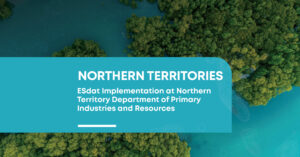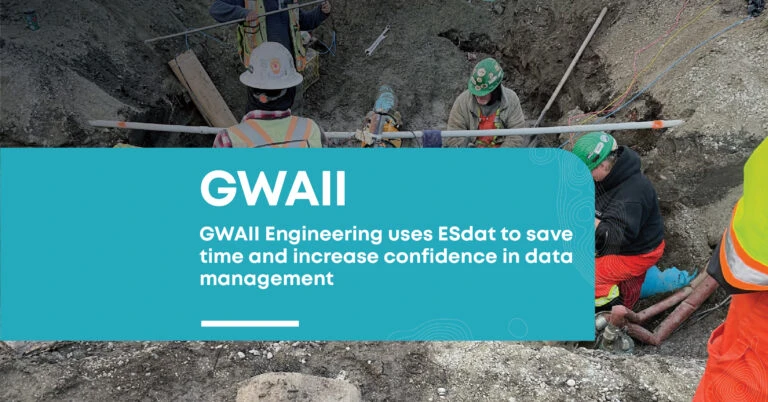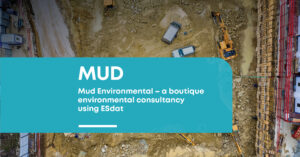
ESdat Implementation at Northern Territory Department of Primary Industries and Resources
The Northern Territory Department of Primary Industries and Resources, Mines
Home / GWAII Engineering uses ESdat to save time and increase confidence in data management

Gwaii Engineering is an indigenous-owned and operated civil and environmental engineering consulting firm in Canada committed to building strong relationships with First Nation clients. Its services include environmental investigations, environmental management plans, environmental monitoring, and soil remediation.
One such undertaking was the McLoughlin Point remediation project in Victoria, BC. For approximately 100 years, McLoughlin Point was the site of a bulk fuel /oil storage and transfer station. In 2017, construction for the new CRD Waste Water Treatment Plant at the site began and contamination in soils was identified during preliminary site excavations. Gwaii staff performed investigations and guided remediation with the goal of obtaining a Certificate of Compliance for the site ahead of the commissioning of the plant. Project details are included below:
Capital cost
Project fees
month project length from July 2017 to September 2020
soil samples collected and analyzed
Soil removed from Site
Large-scale contaminated soil investigations generate hundreds, often thousands of samples. Soil samples are collected from multiple locations, at varied depths, over many days, and by different people. Each sample is then tested for a suite of parameters and compared to regulatory guidelines to determine whether it is contaminated. This generates a huge amount of data, which needs to be interpreted quickly and managed securely so that the findings can be validated in the future.
Previously, GWAII used dedicated borehole logging software to create borehole logs (a record of each test pit/borehole including data about soil types, strata depths, samples collected, and other observations). However, this software was not user-friendly: it didn’t allow templates to be saved, only one user could log in at a time, and it would often crash without saving progress. Filling out the information was a time-consuming and frustrating process.
Soil samples are collected from every borehole or test pit. These are sent in batches to an analytical laboratory and analyzed for suites of parameters. It doesn’t take long before you’ve generated tens of thousands of data points, and this just keeps growing throughout the project.
Laboratory results were previously received at GWAII in spreadsheets which required manual tabulation into the right format for interpretation. Regulatory standards were then added, with data managers needing to take particular care to ensure reporting units were consistent between the two sets of data. Finally, the data manager would review and highlight any exceedances found that may indicate contamination within the soil.
GWAII were finding many disadvantages with this method of working:
It is critically important that the results are accurate. There may be multiple iterations of investigations over several years, all of which must pass regulatory review for the site to achieve a certificate of compliance.
"If a discrepancy in the data is identified during the regulatory review this could be very costly both in terms of time and budgeting which exemplifies how important proper data management is in this industry"
– Sean Babulic, P. Eng., GWAII
Some of the GWAII team had previously worked at companies that had developed their own in-house databases for this type of data management. But this would be very expensive to develop and requires internal resources for ongoing updates and maintenance. Not a practical solution for most small to medium-sized firms.
ESdat offered the perfect solution – a ready-made data management system that is tailored to the needs of environmental monitoring projects.
Core functionality includes the management of sites, sample locations, field data, and laboratory reports.
For GWAII, two functions were particularly valuable:
ESdat immediately reduced project costs and timelines by directly connecting with our laboratory, providing dependable data tabulation against current standards, via a user friendly software interface. Our reporting process has improved as a result.
– Brad Harrold, P. Geo., PMP, GWAII
Switching to ESdat for environmental data management saves considerable time and money compared to the manual approach.
Staff using ESlog have reported that the software is very easy to use and much more efficient than previous methods. Every team member can access the software from any location and the ability to save a template is a huge time saver.
GWAII estimate that previously they were spending at least 45 minutes processing every laboratory report they received, and this doesn’t even include time spent preparing templates, adding standards, and countless other adjustments that were required. In contrast, with ESdat results are available and ready to present to the client within 5 minutes.
Multiply this time saving by the number of laboratory reports received every week and the potential time savings are huge. Even more importantly, ESdat gives the team confidence that the results are safely stored and that nothing has been missed in the analysis.
“Switching to ESdat has increased our confidence in our data management while significantly reducing the time required to complete data tabulation.”
– Sean Babulic, P. Eng., GWAII

The Northern Territory Department of Primary Industries and Resources, Mines

Aquadata is the public interface of Shoalhaven City Council’s ESdat

Mud Environmental is a boutique environmental consulting business operating in
This site is protected by reCAPTCHA
and the Google Privacy Policy and Terms of Service apply.
Website development: Vasartes.com
Mockups: syifa5610 on Freepik